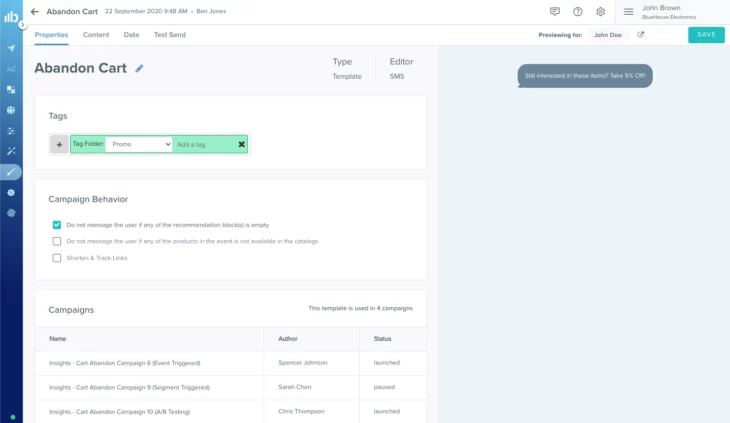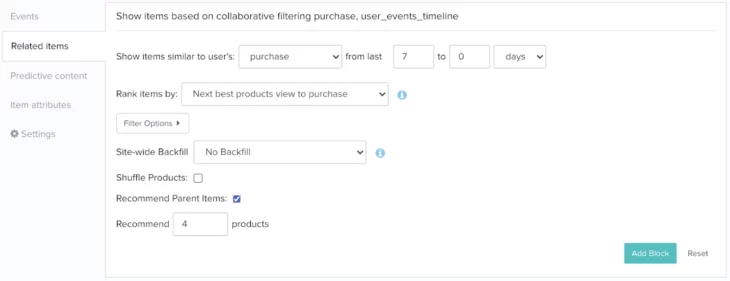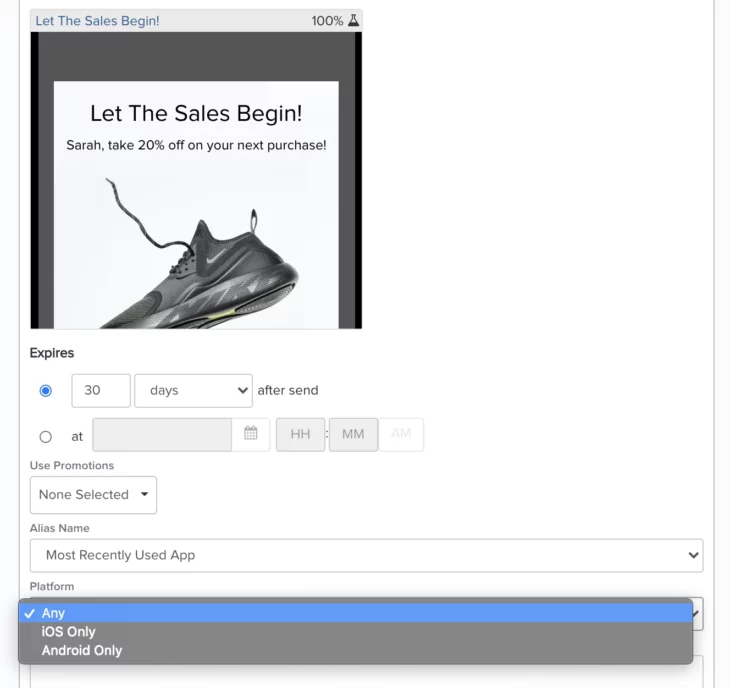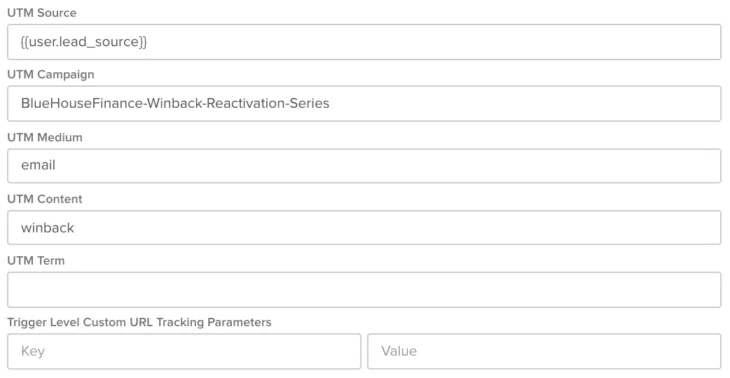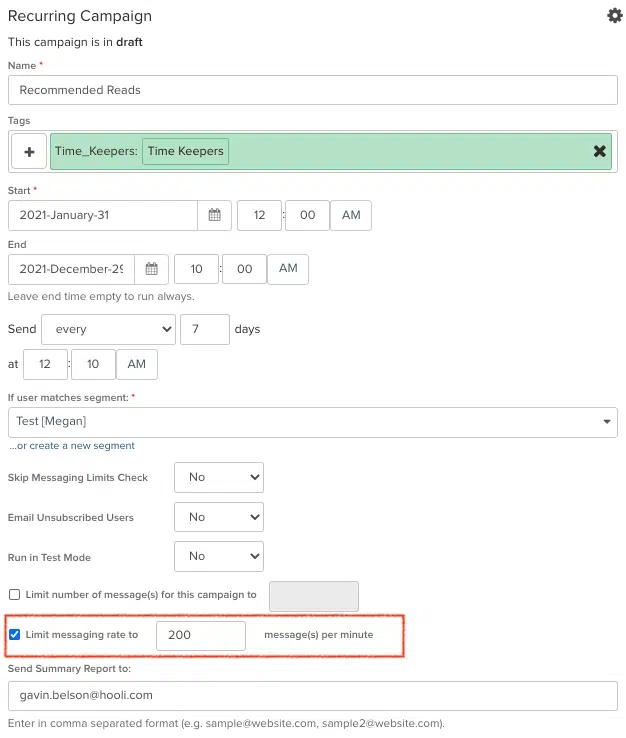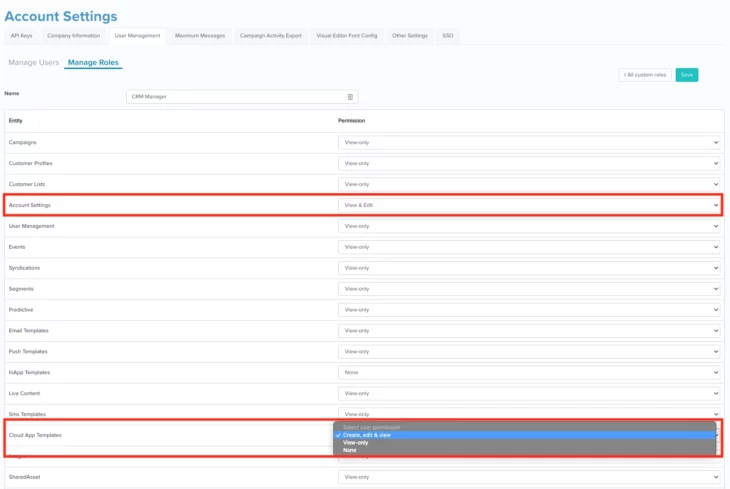01.05.21 AND 01.19.21
January 2021 Updates
01.19.21
Revamped Creative Studio for SMS
We revamped the SMS Creative Studio to make it even easier to navigate and quicker to create SMS templates. The Creative Studio is now broken down into 4 tabs providing quick access to each element of your templates:
- The Properties tab provides template details such as the template name, associated tags, and campaigns the template is used in. This is also where you set guidelines for using the SMS template in a campaign.
- The Content tab lets you customize SMS messages to your business-specific needs and brand guidelines through a simple text editor. You can effortlessly add liquid merge tags to any template through our ‘auto suggest’ drop down.
- The Data tab allows you to add recommendation content and event attributes to the SMS payload. Additionally, you can preview the content of your SMS messages for any customer, segment, event, or attribute.
- The Test Send tab allows you to send test SMS messages to any number to ensure they render correctly.
This release elevates the Creative Studio for SMS to the level of our Email and Push studios. If you know one studio, you know the others, as we now have a consistent interface and workflows across each one. You’ll spend less time learning a new tool and more time focusing on the priorities that matter to your business.
01.19.21
New Integrations with Quora and Outbrain
Blueshift now supports Quora and Outbrain for Audience Syndication. You can sync the precise audience segments you create within Blueshift to either of these display advertising destinations just like you would do with other paid media platforms such as Facebook, Criteo, and Taboola.
Blueshift’s Audience Syndication capability helps brands optimize media budgets with highly-targeted, relevant ads by activating first-party data.
01.05.21
Recommendations With Parent Items
We’ve extended our Recommendation Studio to allow you to surface similar ‘parent’ products based on the ‘child’ product a customer has expressed interest in. For example, a media streaming provider can help customers discover content by exposing new shows based on an episode they’ve watched, rather than recommending an episode from the same show. An eCommerce company can recommend recently released ‘shoes’ a customer may like based on the size, color, or style of other similar shoes they viewed in the past, driving them back to your brand to make a purchase.
To set up ‘parent item’ recommendations, go to the Recommendation Studio and create a new recommendation block. In any of the attribute tabs (Events, Related Items, Predictive Content, or Item Attributes) you’ll see a checkbox for ‘Recommend Parent Items’. Once checked and added to a message template, Blueshift automatically surfaces tailored recommendations similar to the parent product.
01.05.21
Editable Group Attributes
With improved Groups and Households, you can go beyond viewing account details and now edit standard and custom attributes including email, phone number, name, lifetime revenue, subscription plan, and more.
Within the Blueshift interface, you can edit existing Groups — which connects customers with shared attributes to a common parent entity — by going to the ‘Groups’ tab, selecting the desired Group, and clicking on the edit icon to make updates directly to the profile page.
01.05.21
Audit Trail for Segment Exports
To provide Account Admins with greater visibility into what employees are doing, we’ve expanded our Audit Trail records to track every time a user ‘exports an audience segment’ from Blueshift through our segment export feature. Now, in addition to recording other employee actions — such as updating a profile, deleting a segment, or editing a trigger — Blueshift automatically captures which employees exported a segment.
You can view Audit Trails directly in Blueshift by navigating to the dropdown settings menu in the upper-right corner of the screen and clicking ‘Audit Trail’ in the ‘Security’ section. When you click on an audit trail record for a segment export, you will see an overlay with accompanying details including the segment name, filter criteria, and the exact count of customers in the segment during the time it was exported
01.05.21
Identity Resolution With Campaign Activity
Our enhanced Identity Resolution now links anonymous user activity on your website (what they clicked, what they viewed, and more) to known profiles if the customer was redirected to a web page after clicking on one of your emails. Blueshift then determines who the user is, even if they never logged in. You can leverage this data to build audience segments or trigger messages across channels.
01.05.21
Improved Match Rate for Google Ads and Criteo
We’ve improved our Audience Syndication algorithm for matching customers in Blueshift to those across Google Ads and Criteo. We now go beyond matching based on email address and include First Name, Last Name, Country Code, City Code, and Phone Number for Google Ads. Similarly, we’ve improved matching customers in Criteo by adding IDFA (iOS Identifier for Advertisers) and AAID (Android Advertising ID) in addition to email address.
For more information, check out the release notes for Google Ads and Criteo.
01.05.21
Updated Mobile SDKs
We’ve released new versions of our mobile SDKs for both Android (V3.1.8) and iOS (V2.1.12). Our updated iOS SDK enhances In-App messages with sceneDelegate and window size management, improves event tracking with timestamps, and helps debug issues with device logs. Our Android SDK has been updated to reduce memory usage with scaled images for carousel Push messages, improves event tracking with local timestamps, and introduced support for Push Notification click tracking.
To learn more about our updated mobile SDK, please refer to our release notes: Android and iOS.
01.05.21
Mobile Device Platform Filter
This feature will allow you to target your push and in-app messages to devices on a specific platform. You can send push or in-app messages to only iOS devices or only Android devices, depending upon your campaign criteria.
By default, Push and In-App messages are platform agnostic, meaning they get delivered regardless of the mobile device. To deliver messages to a specific platform, simply click on the ‘Advanced Settings’ icon (⚙) in the top right corner of the trigger and you’ll enter the advanced configuration mode. Then, select the desired platform from the ‘Platform’ dropdown list. Once the campaign is launched, the message will be delivered to only those devices having the selected platform.
01.05.21
Dynamic UTM Parameters
We’ve extended our UTM Parameters (Source, Campaign, Medium, Content, and Term) to support Liquid Variables. You can now use dynamic values like user attributes, recommendation blocks, external fetch, events, or transaction attributes for one or more UTM parameters to better track campaign performance. For example, in the UTM Content parameter, you can use the Liquid variable {{user.gender}} to analyze how your campaign performed for men compared to women.
Blueshift automatically pulls in the appropriate values for the Liquid variables at the time of sending the message. You can thus measure how different user (or other) attributes impact your campaign’s performance using any 3rd-party tool such as Google Analytics.
01.05.21
Campaign Throttling
With Campaign Throttling, you can control the sending rate (the number of messages sent per minute) for your ‘One-Time’ and ‘Recurring’ campaigns. Campaign Throttling greatly improves your IP warm up strategies by preventing you from exceeding ISP limits and reduces deferrals or blocks by sending the optimal amount of emails during ramp up.
You can access this setting in the campaign journey builder when you open the advanced settings (⚙ icon) for the campaign. Simply check the ‘limit messaging rate’ text box and enter a value. Once set up, you can be confident your message volumes will stay on course with your IP warm up plan.
01.05.21
Custom Roles for Account Settings and Cloud Apps
Through our Role-Based Access Management Tool, you have complete control to customize which users have access rights to certain capabilities within the Blueshift platform. Our latest release allows you to become more precise by allowing you to set and define privileges for ‘Account Settings’ and ‘Cloud Apps’ to non-admin users.
As an account admin, you have the ability to set access rights to any entity directly in the Blueshift UI. Simply navigate to the ‘Account Settings’ page, select User Management, then click Manage Roles. You can either create a new role or edit an existing one to have this capability. For ‘Cloud Apps’ you can specify which users have Create, Edit & View, View Only, or No Access.
For ‘Account Settings’, you can set View & Edit or No Access.
01.05.21
Blueshift Deep Link Enhancements
We’ve improved the Blueshift Deep Link feature to allow you to specify whether a link redirects a customer to the desired page inside your mobile app or web browser to create streamlined channel-to-app and channel-to-website experiences.
By default, all links are treated as app links and are redirected to your mobile app. You can specify if you do not want the link to be redirected to your mobile app by simply adding the attribute ‘web-only = true’ to your URL. For instance, if you want the link ‘BlueHouseMedia.com’ to open up on the mobile browser instead of your mobile app, just add the link as https://bluehousemedia.com” web-only=“true”>’
All non app links will be handled by the OS, which will determine the best app or browser to redirect the customer.
01.05.21
Campaign Creation API Enhancements
We’ve expanded our Campaign Creation APIs to now include the ability to specify a messaging ‘trigger name’ in addition to existing trigger configurations such as ‘tempate_uuid’, ‘utm_campaign’, ‘utm_content’ and more.
01.05.21
Enhanced Shopify Integration
Our enhanced Shopify integration now only needs your brand’s ‘store name’ during initial configuration rather than using the entire URL, streamlining account setup, and reducing any copying mistakes.
